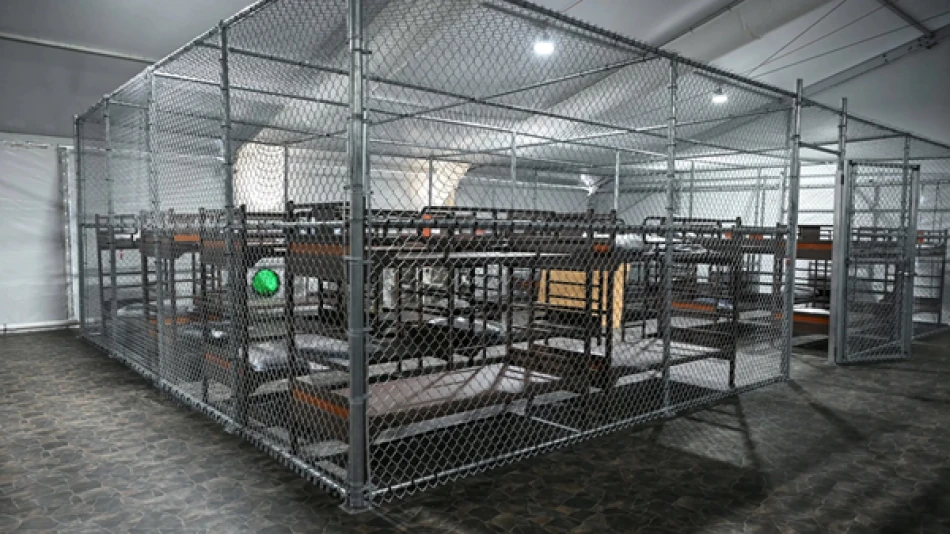
US Builds Detention Camps Nationwide to House Immigrants
US Immigration Enforcement Launches Massive Detention Expansion, Targeting 150% Capacity Increase
US Immigration and Customs Enforcement is racing to construct detention facilities across the country with $45 billion in new funding, aiming to more than double capacity from 40,000 to 100,000 beds by year-end. The unprecedented expansion signals the most aggressive immigration enforcement infrastructure buildup in decades, with Republican-led states emerging as preferred partners over private prison contractors.
Military Bases and State Facilities Take Priority Over Private Contractors
According to internal documents reviewed by the Wall Street Journal, ICE is prioritizing large-scale camps on military installations and state-run immigration facilities. The strategy marks a significant shift from previous administrations' reliance on private prison companies, reflecting both cost considerations and political alignment with Republican governors.
Key facilities under development include a 5,000-bed site at Fort Bliss in Texas, alongside additional locations in Colorado, Indiana, and New Jersey. The military base approach offers several advantages: existing infrastructure, federal land availability, and reduced local opposition compared to urban detention centers.
Republican States Embrace "Alligator Alcatraz" Model
Department of Homeland Security Secretary Kristi Noem revealed ongoing negotiations with five Republican-led states to construct additional detention sites modeled after Florida's "Alligator Alcatraz" facility. This approach leverages state-federal partnerships while avoiding the political complications of private contractor relationships that have drawn criticism in previous immigration surges.
The preference for Republican-controlled states reflects both practical and political considerations. These states typically offer more cooperative regulatory environments, available land, and political support for immigration enforcement operations. Florida's model facility has become a template for cost-effective, high-capacity detention that other states are eager to replicate.
Historical Context: Largest Immigration Infrastructure Investment Since 2006
The $45 billion funding package represents the largest single investment in immigration detention infrastructure since the 2006 Secure Fence Act. Unlike previous expansions that relied heavily on private contractors like CoreCivic and GEO Group, this approach emphasizes government-operated facilities and state partnerships.
This shift reflects lessons learned from past detention surges, where private facilities faced criticism for conditions, costs, and oversight challenges. By partnering with state governments and utilizing military installations, ICE aims to avoid the operational and public relations problems that plagued earlier expansions.
Economic and Operational Implications
The rapid capacity increase from 40,000 to 100,000 beds represents a 150% expansion that will require massive logistical coordination. Beyond construction, the operation will demand thousands of additional personnel, from detention officers to immigration judges, creating significant employment opportunities in participating states.
For participating Republican states, the federal partnership offers economic benefits through job creation and federal spending, while aligning with their immigration policy preferences. The model creates a win-win scenario that could prove more sustainable than previous private contractor arrangements.
The scale and speed of this expansion suggests the administration anticipates sustained high-volume immigration enforcement operations extending well beyond typical election-cycle policies. The infrastructure investment indicates a long-term strategic approach rather than temporary political messaging, with implications that will shape US immigration enforcement capabilities for years to come.
Most Viewed News

 Layla Al Mansoori
Layla Al Mansoori






